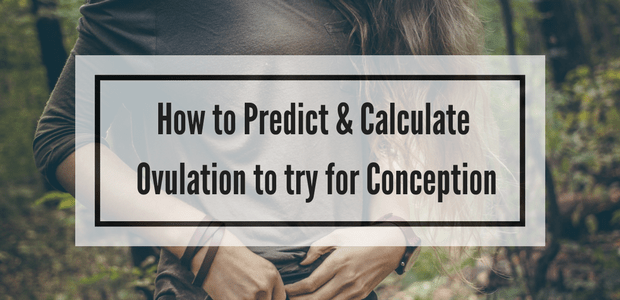If you’re ready to start a family, you probably want to get pregnant as soon as possible. This isn’t usually hard to do, especially if you’re in your 20s or early 30s and have no medical issues that can affect your fertility. However, these still won’t guarantee that you’ll conceive right away.
Fortunately, there are several things you can do to increase your chances of successfully conceiving. One of these is to predict and calculate your ovulation.
***Disclosure -The links in this post contain affiliate links and Kaboutjie may receive a small commission if you make a purchase after clicking on a link.***
Ovulation and Conception
Ovulation is the time when an egg is released from your ovary. The egg travels down your Fallopian tube, where it waits for a sperm to fertilize it.
Ovulation is one of the most important factors in fertility. If you have problems with ovulating, your body might not release an egg or it would release an immature egg — both of which can make it harder for you to conceive.
Knowing when you’re ovulating is important since it gives you an idea about your fertility window, or the days when you’re most fertile. When you have intercourse on these days, you have significantly higher chances of getting pregnant than when you have intercourse on ordinary days.
Calculating Your Ovulation
Predicting your ovulation requires you to be familiar with your menstrual cycle. So, if you don’t really know much about it, it’s time to study it closely.
To do this, you must take note of the first day of your period (also known as last menstrual period or LMP). Do this for several months, then calculate the number of days between your LMPs. You might notice that there are a certain number of days from one period to the next. Some women have a 28-day menstrual cycle, while others have a shorter or a longer cycle. Still others have irregular periods, which means their menstruation arrives earlier or later than expected or even skips a few months.
Ovulation takes place around two weeks before your next period. So, if you have a regular 28-day menstrual cycle, you will most likely ovulate on Day 14 (or 14 days after your LMP). If you have a 35-day cycle, your ovulation will likely happen on Day 21; if you have a 21-day cycle, you will likely ovulate on Day 7.
Window of Opportunity
Once you know your ovulation day, you can determine your fertility window. This window covers your day of ovulation as well as the five days before it. For instance, if you have predicted that you will ovulate on January 6, your fertile window will start from January 1 to January 6.
The probability of conception increases as you get near your ovulation. According to experts, you have a 10 percent chance of getting pregnant when you have sex five days before your ovulation. This rises to 16 percent on the fourth day and slightly dips to 14 percent on the third day. You have a 27 percent chance of conceiving on the second day before ovulation and a 31 percent chance one day before it. On the actual day of your ovulation, you have a 33 percent chance of conceiving when you have intercourse.
It’s best to have intercourse on the day of your ovulation since this is when you have higher chances of getting pregnant. However, you don’t really have to set up a rigid schedule for yourself and your partner and get stressed out over it. This comes from the fact that sperm can live inside your body for up to five days. So, even if you can’t have sex on your actual ovulation day, you can still get pregnant if you had sex a couple of days earlier.
Take note, though: your chances of getting pregnant significantly decreases when you get past your ovulation day. In fact, according to experts, your chances of conception plummets down to zero percent 24 hours after your ovulation day. This is why it’s important to be familiar with your menstrual cycle and know when you’re ovulating.
Signs of Ovulation
Calculating your ovulation is an estimate at best, but it becomes even more unreliable if you have an irregular menstrual cycle and can’t predict when you’ll have your next period. Fortunately, if this is the case, you can still determine when you’re ovulating by watching out for several signs. These include:
- Cervical mucus — Normally, your cervical mucus is thick and sticky and will break apart if you try to stretch it between your fingers. But, when you’re ovulating, it turns thin and clear and becomes stretchy — if you stretch it between your fingers, it can expand up to an inch or two before it breaks. This is the perfect consistency to help sperm travel up your vagina and cervix and reach your egg. It’s advisable to check your cervical mucus daily and recording your findings in a chart over a few months.
- Basal body temperature (BBT) — Your BBT is the lowest temperature of your body in a 24-hour window. Knowing your BBT is important since it experiences a rise of 0.5 to 1.0 degrees Fahrenheit the day after you ovulation (and retains this temperature until your next period). By tracking your BBT for several months, you can see a pattern in your menstrual cycle and predict when you’ll ovulate. You’ll need to use a BBT thermometer to do this; a digital thermometer is available, but doctors say the mercury thermometer is more accurate. Take your BBT as soon as you wake up, before you even get out of bed; doing anything (even simply standing up) can raise your body temperature and cause inaccurate readings.
- Twinges of pain — Some women feel a twinge of pain in one side of their their abdomen or lower back when they’re ovulating. This pain is called mittelschmerz and might be related to the release of an egg from your ovary. Only 20 percent of women experience this, though, so don’t worry if you don’t notice any mittelschmerz.
Charting your BBT and cervical mucus can be helpful since they can give you an idea of when you’re ovulating. More likely than not, your chart will show that you have fertile-quality mucus a few days before you record a higher BBT. You’ll want to have sex when your mucus turns thin and stretchy and, if you have a regular menstrual cycle, you can time your intercourse a few days before your BBT is due to rise.
Using Ovulation Predictor Kits
If you don’t have the time to chart, you can use ovulation predictor kits, which measure the level of hormones in your body and tell you if you’re ovulating or nearing ovulation. Some kits test your saliva and measure your estrogen levels, while others test your urine and measure your luteinizing hormone levels. Both of these hormones increase as you near your ovulation.
 Kaboutjie SA Mommy Blogs by Lynne Huysamen
Kaboutjie SA Mommy Blogs by Lynne Huysamen






@lynne this was a problem for me as i didnt know and didnt have these information we tried from beginning of August and january we found out we 7 weeks pregnant so took a while as we didnt know how to predict i guess.
It’s worked for me perfectly, I started using its app on December and walla January was my last period